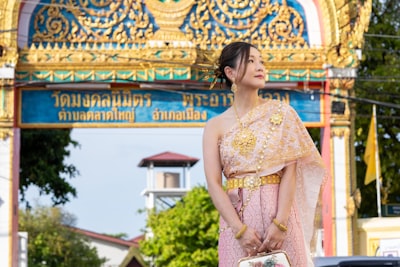Summary
A fresh cultural dispute has arisen in Southeast Asia as Thailand prepares to nominate its revered royal traditional dress (Chut Thai Phra Ratchaniyom) for Unesco’s Intangible Cultural Heritage of Humanity in 2026. National excitement in Thailand, however, is tinged by concern—Cambodia has submitted its own bid for World Heritage status for its wedding traditions, allegedly using images and references to Thai attire. Social media and public voices in Thailand have called for urgent government action, pointing out Cambodia’s inclusion of distinctly Thai garments could blur cultural lines and misrepresent origins. Officials and cultural advocates are now mobilizing documentation and could resort to diplomatic engagement to protect what they see as Thailand’s unique cultural claims. Both applications are due for consideration by Unesco next year, with the dispute spotlighting deeper issues of historical rivalry and cultural preservation.
Analysis
This episode underscores how cultural heritage can become a flashpoint for nationalism, especially in regions with intertwined histories and longstanding rivalry. The challenge lies in the intangible nature of culture: dresses, rituals, and arts are often products of centuries of exchange, adaptation, and mutual influence. Thailand’s quick mobilization to defend its royal dress speaks to its anxieties about cultural dilution or misappropriation, particularly as previous disputes with Cambodia—such as over the Preah Vihear temple—have amplified sensitivities. Conversely, Cambodia’s inclusion of Thai-like elements in its own submission might reflect both shared traditions and attempts to shore up distinctive identity and pride in the global arena. The framing of this issue predominantly from a Thai perspective in coverage could mask complexities: are these elements truly unique, or are they regionally shared adaptations? The absence of Cambodian perspectives in the report also limits our understanding of motives and claims.
From a broader point of view, Unesco’s heritage listings, designed to foster international recognition and protection of culture, can inadvertently sharpen nationalist competition. The prestige of international recognition often drives nations to assert, sometimes exaggerate, the distinctiveness of their traditions.
Discussion
The Thai-Cambodian heritage dispute is more than just a bureaucratic skirmish; it raises substantial questions about the nature and ownership of culture. Who decides what is authentically national in regions shaped by centuries of migration, conquest, and exchange? Can neighboring countries negotiate shared heritage, or will global recognition schemes entrench exclusive claims and provoke rivalry?
Such disputes echo other global flashpoints, such as the contest between South Korea and China over the origins of kimchi or that between Greece and North Macedonia regarding historical identity. These issues matter because they shape how nations and peoples see themselves, their neighbors, and their place in history.
The situation invites not only a defensive posture—mobilizing proofs and appeals to authority—but an opportunity for dialogue and shared celebration of cultural interconnectedness. As Unesco moves forward, its role may need to evolve: from being an arbiter of national claims to a facilitator of regional dialogue and mutual recognition, fostering not just pride, but understanding and peace.
In the end, the question is not only whose dress or tradition is more authentic, but how countries can respectfully navigate overlapping histories in a way that both preserves identity and promotes regional harmony.

Comments
No comments yet. Be the first to comment!